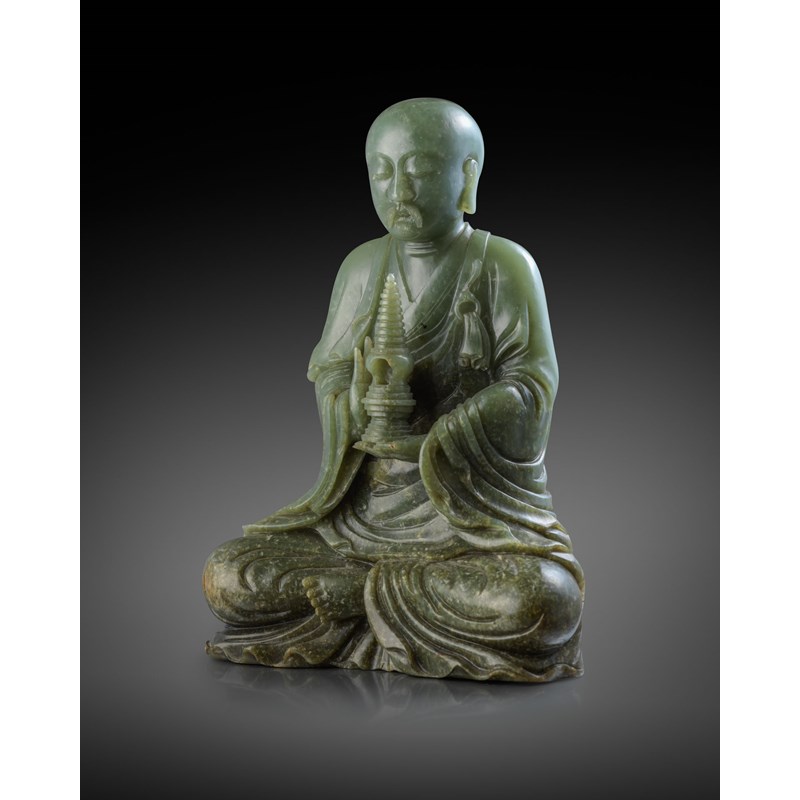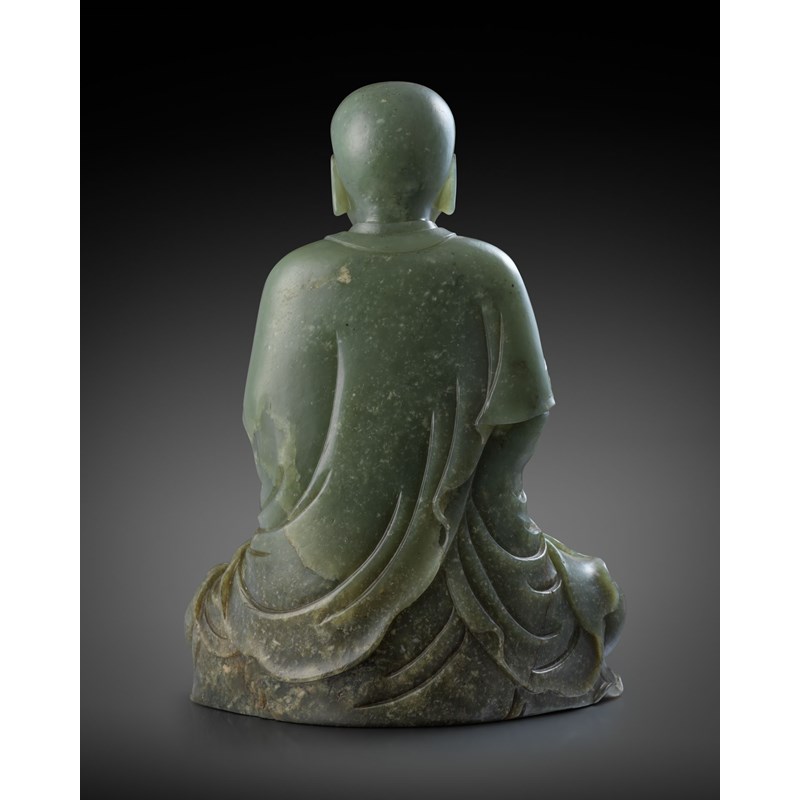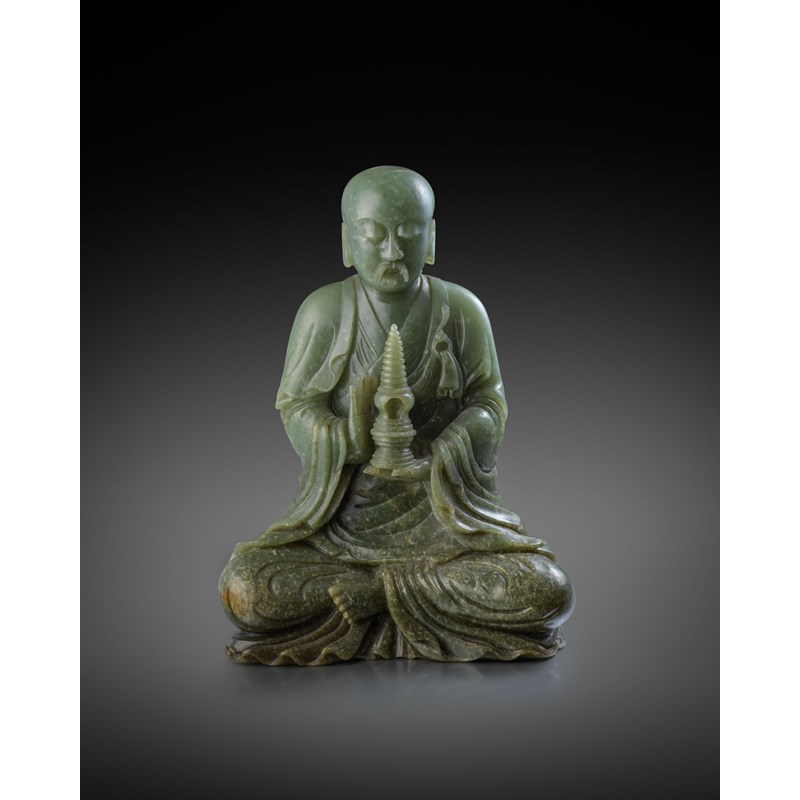The Lawrence Jade Collection - 14 Nov 2023
A RARE AND LARGE CHINESE SPINACH-GREEN JADE FIGURE OF A LUOHAN
A RARE AND LARGE CHINESE SPINACH-GREEN JADE FIGURE OF A LUOHAN
18TH CENTURY
Carved seated in dhyanasana wearing a shawl and long robes, his garments held by a clasp at his left shoulder, he holds a stupa in his left hand whilst raising his right hand behind the precious object in a variation of abhaya mudra, his serene face detailed with a small finely incised moustache and beard, the green stone with brown flecks and inclusions, 23.5cm.
Provenance: the Lawrence Collection of jades and hardstone carvings, purchased from Spink & Son prior to 1959.
In prehistoric times, jade was carved into human form. Such pieces are usually identified as religious worshippers and priests, sometimes as Immortals. The mysterious quality of the jade itself lent a special meaning to the figure it represented. This particular figure is carved from a large boulder of spinach-green nephrite. He has been conventionally identified as a Chinese sage, but his long, flowing robe is closer to the attire of Buddhist monks.
The name Luohan comes from the Sanskrit arhan or arhat, referring to the Buddhist ascetics. They are disciples of Sakyamuni Buddha, who have passed the eight-fold path (right belief, resolve, speech, work, livelihood, training, mindfulness, abstract, meditation), and reached Nirvana or Enlightenment. They are essentially associated with the Hinayana School of Buddhism, and each has the title Samantha prabhasa or general wisdom; they can teach or train others to attain perfection. Luohans are very popular in China, as it is believed they can protect patrons and believers by expelling ignorance and defeating robbers. In the Buddhist legend, there are normally 500 Luohans, but the most famous ones usually appear together in groups of 16 or 18. Luohans are represented in painted portraits as well as in sculpture. All have distinctive attributes: for instance, Pindola the Bharadvaja has elongated eyebrows, Vajraputra is lean, ribbed and hairy; Nakula is always shown with a mongoose. However, it is quite difficult to identify the present figure with a particular Luohan. Many Luohans have a book or staff in their hands, but in this case the figure holds a stupa, perhaps suggesting that he has entered Nirvana.
Cf. Catalogue of the International Exhibition of Chinese Art, 1935-6, no.2860 for a similar figure lent to the exhibition by Mr and Mrs Edward Sonnenschein; see also G Wills, Jade of the East, p.104, nos.63-64 and N Zhou, Ancient Jades in Man, Immortal and Buddha, p.309, nos.360-361 for further related examples; see also Asian Art I, 17th November 2010, lot 337 for a comparable spinach-green jade figure of Buddha of the same size previously sold in these rooms.
十八世紀碧玉雕托塔羅漢
來源:勞倫斯珍藏玉石,1959年前購於Spink & Son。






 Live online bidding is available via our own
Live online bidding is available via our own